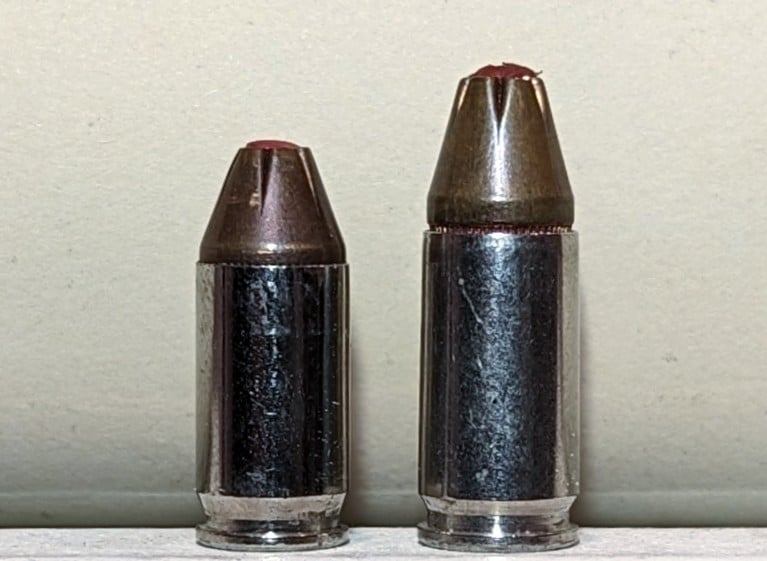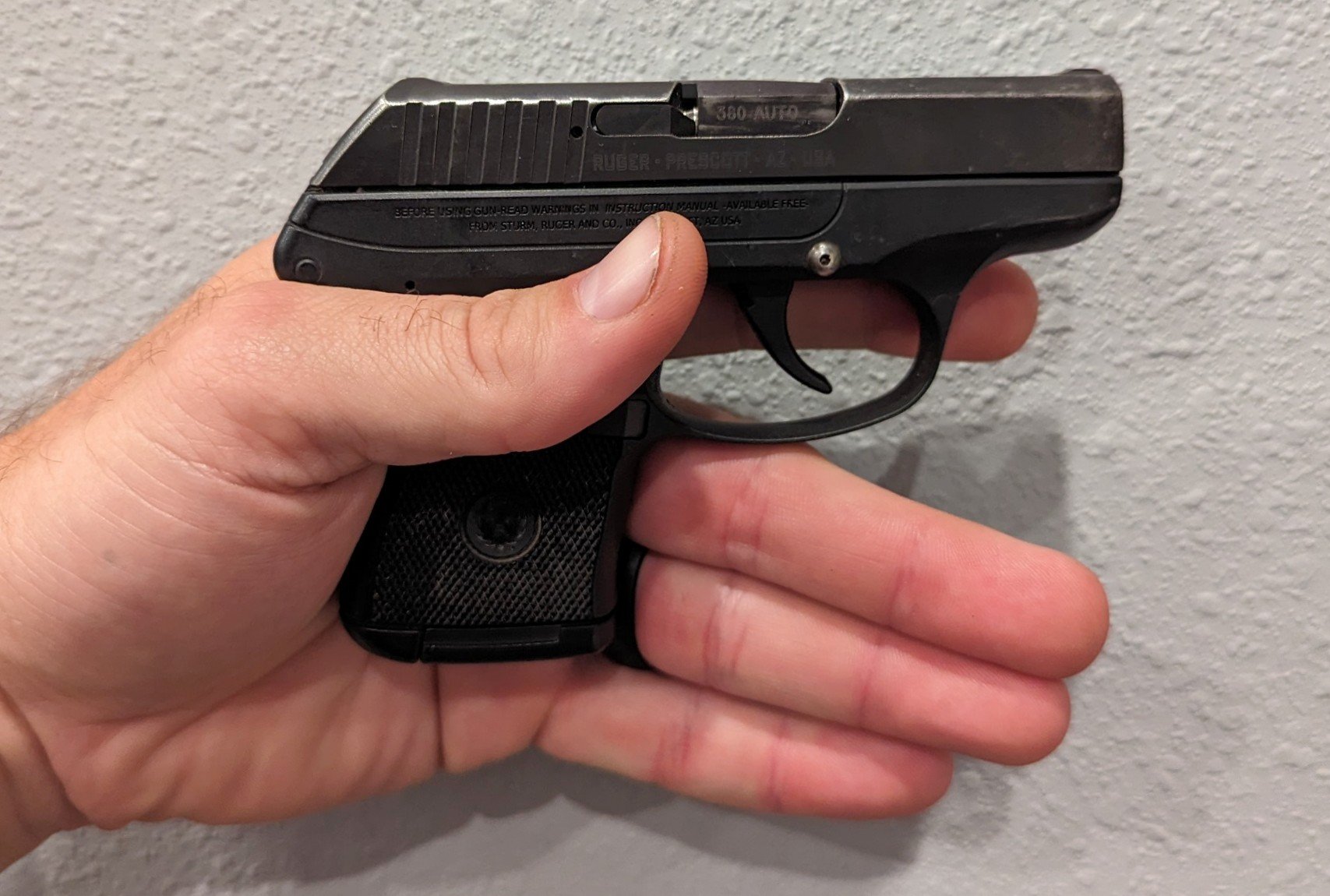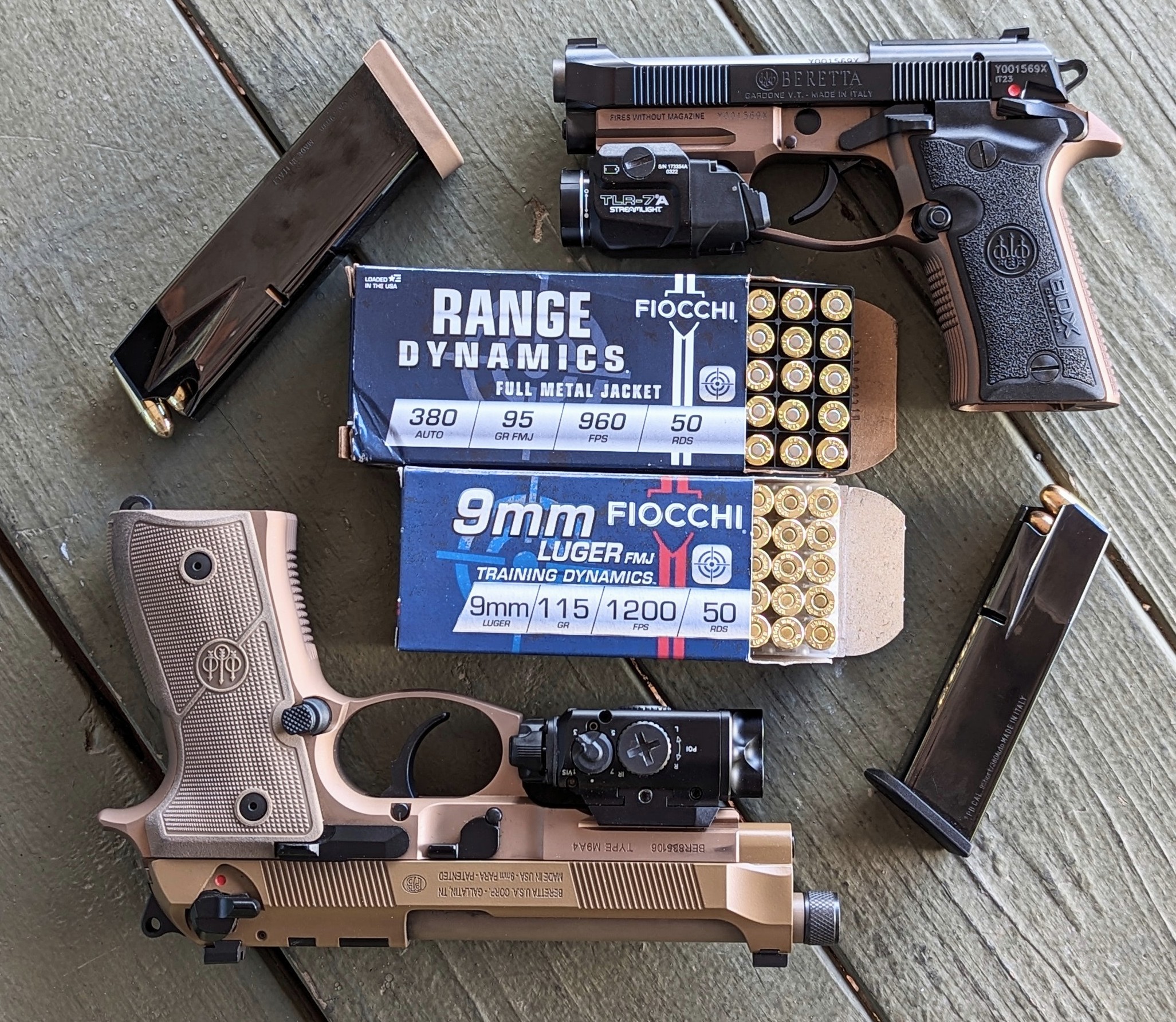Shooters love to debate and compare anything and everything: AR vs. AK, 9mm vs. .40 S&W, Colt vs. Smith & Wesson and so on. These debates make for exciting and, at times, heated discussions at many ranges and gun stores. I am by no means exempt from this as anyone who has read my ramblings knows I enjoy comparing and contrasting nearly anything I can reasonably measure with a timer, target, camera, or chronograph. One debate that’s raged over the years is the role of the .380 ACP as a defensive cartridge.
Some argue the .380 ACP is too anemic while others say it is the baseline for a viable defensive cartridge. While no one wants to be shot by a projectile — whether from a BB gun or .50AE Desert Eagle, the discussion primarily focuses on the ability of a handgun cartridge to effectively and efficiently stop a lethal threat.
This debate over .380 ACP as a defensive caliber has raged for decades and will most likely continue into the generations to come. However, with modern defensive ammunition, the .380 has experienced a resurgence in popularity in the last few decades. As the discussion continues, I felt it worthwhile to address some of the basic salient points about the .380 ACP and the pros and cons of this cartridge.
The Resurgence of the .380 ACP
The .380 ACP was a bit of a niche cartridge upon entering the 21st Century. There were few options during that time for reliable .380 pistols outside of a Colt Mustang or Seecamp LWS until the KelTec P3AT’s introduction in 2003. Ruger then introduced their LCP (Lightweight Compact Pistol) in 2008 to great fanfare. Coincidentally, I acquired my CCW during that time and purchased one as a backup pistol for my primary concealed carry firearm.
Hornady made a significant improvement in the .380’s performance with the introduction of their Critical Defense lineup around 2011. One of the flagship cartridges was their offering of a 90-grain .380 ACP with their patented FTX bullet. The addition of a polymer insert in the hollow cavity of the bullet arguably improved terminal ballistic performance.
As time went on, the selection of pocket pistols chambered for .380 expanded. Firearms like the Smith & Wesson Bodyguard, Sig 238, and numerous others flooded the market. While anecdotal, my experience working in a gun store at the time gave some perspective on the popularity of .380 pocket pistols. They were reliable, relatively inexpensive, and extremely difficult to keep in stock. The consumer demand generated more options and variety than the market had seen in some time for the .380.
Limitations and Advantages of .380 ACP
While some cartridges like the 10mm Auto and magnum revolver calibers (.357, .41, and .44) provide exceptional terminal ballistics, they carry numerous disadvantages for the average user. Larger caliber pistols are larger, have more recoil, and incur increased costs to those who train. Big is nice, but it’s not necessarily convenient. Furthermore, most popular handgun calibers are shockingly underpowered. Unlike the movies, threats don’t stop with a single bullet to the vital areas from a 9mm or .45 ACP. Shot placement and reliable terminal performance of the projectile maximize the effectiveness of a cartridge.
While reserved for another discussion, the 9mm seems to have won, for now, the caliber wars between the .45 ACP, .40 S&W, and 9mm that have taken place since the mid-80s. For purposes of this article, I reference the 9mm as the standard for a defensive pistol caliber. So, how does the .380 ACP compare?

Since I referenced one of the most common offerings of the .380, Hornady Critical Duty, earlier; I’ll use that as the basis for this discussion. When compared to the 9mm, the .380 ACP has the appearance of a stunted sibling. This isn’t entirely wrong, as the .380 had alternate names of “9mm Short” or “9mm Kurz” (Kurz is German for short) in its early days.
Hornady’s Critical Defense load features a 90-grain projectile advertised with a 1,000 fps velocity and 200 ft-lb energy at the muzzle. For comparison, Hornady’s 9mm 115-grain loading is advertised at 1,135 fps with 332 ft-lb of muzzle energy. The 9mm is a substantial increase in muzzle energy — 66% — over the .380. With this data, the .380 looks tragically anemic. However, when the .380 is compared to .32 ACP, the .380 ACP muzzle energy outperforms the .32 by 50%.
From this data and my experience in seeing the terminal performance of .380 in a professional capacity, the .380 ACP is barely a viable defensive caliber. The benefits of the .380 are that it can be offered in smaller, lighter, and more compact handguns than 9mm. A lighter bullet with lower velocities sacrifices terminal performance but mitigates some recoil when put into such a small package. I place emphasis on some of the recoil as the 2,000 rounds put through my little LCP on the range were anything but pleasant.
The size of the gun is as important as the size of the cartridge.
I personally own only one .380 ACP — one of the early production Ruger LCPs. This pocket pistol has some miles on it from both carry and range time. Any range session shot with this pistol was not overly enjoyable due to its extremely compact size. If anything, the pistol taught me recoil management as my ring finger only partially envelopes the bottom portion of the grip.

A common complaint from .380 owners is the recoil of the firearm. Conversely, those same shooters seem to have little complaint when shooting most 9mm pistols. This conclusion seems counterintuitive as we’ve already established the 9mm pushes a heavier bullet faster than the .380 ACP. The common denominator in this phenomenon is the size of the involved handgun. I propose putting a 9mm Luger in an LCP-sized pistol would be far more miserable to shoot than one chambered in .380. The opposite stands true that a full-sized handgun chambered in .380 ACP will be surprisingly manageable to shoot.
While I can speak to this issue from experience, it’s easier to show the recoil of a .380 vs. a 9mm in a similar platform. I recently had the opportunity to review a Beretta 80X Cheetah on the range. After putting 300 rounds through the firearm, it was a far different experience from shooting the little LCP. The 80X Cheetah is considered a compact firearm but still allows for a full grip with my paws on the controls.

Conveniently, a Beretta M9A4 was available during the 80X Cheetah review and took its seat as the 9mm counterpart to the .380 Cheetah. Both firearms are similar in appearance and feel. The Cheetah is direct-blowback whereas the M9A4 is a locked breech design. They are similar in many ways but are very different in operation. Nevertheless, these were the closest comparisons available. The ammo used was Fiocchi ball ammunition. A camera was set up on a gimble with a horizontal background to measure the muzzle rise of each shot.
After recording the recoil of the Cheetah and M9A4, the muzzle rise was nearly identical for both. Five rounds were fired through each firearm and muzzle rise remained consistent from shot to shot. I felt a slight difference in recoil between the .380 and 9mm, with the .380 slightly edging out the 9mm. If we could somehow materialize an M9A4 chambered in .380 ACP, one could reasonably conclude the .380 M9A4 would have less muzzle flip.
Beyond obtaining slow motion video, the M9A4 and Cheetah were shot on steel targets with little difference in overall time to complete the drill between the 9mm and .380 ACP. One noticeable difference was the effectiveness of the 9mm versus the .380 in knocking down steel poppers. The .380 had obvious difficulty in knocking down the steel the 9mm confidently neutralized.
While the debate as to the effectiveness of the .380 ACP as a defensive cartridge will continue to rage on, the .380 has an established place within the defensive firearms industry. From the compact offerings of the LCP (and now LCP II) to the “full-size” offerings of the Beretta Cheetah, Smith & Wesson M&P 380EZ, Walther PK 380, amongst others; the .380 still has a significant market share.
The main takeaway from the .380 ACP as it is today is that shot placement and ammunition selection are critical to maximizing the cartridge’s effectiveness in neutralizing a threat. Furthermore, smaller guns aren’t always better — even if the cartridge is smaller. If the gun is small and uncomfortable to shoot, the shooter will avoid training with it. Keep these considerations in mind when in the market for your first (or next) .380 pistol and the risk of being miserable, disappointed, and untrained in your firearm choice will be less likely.


